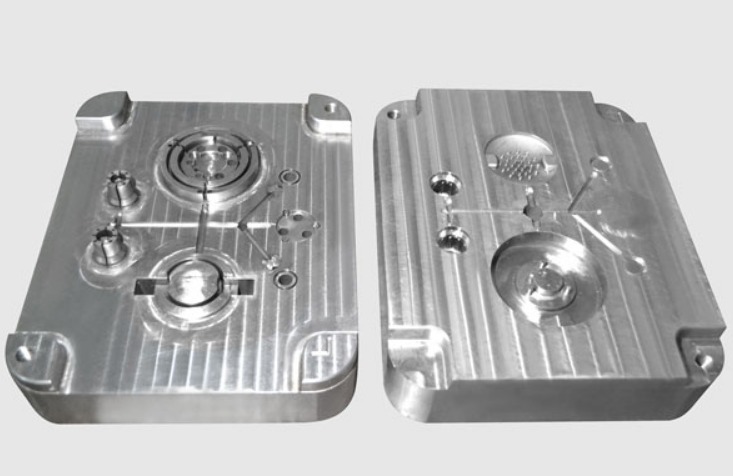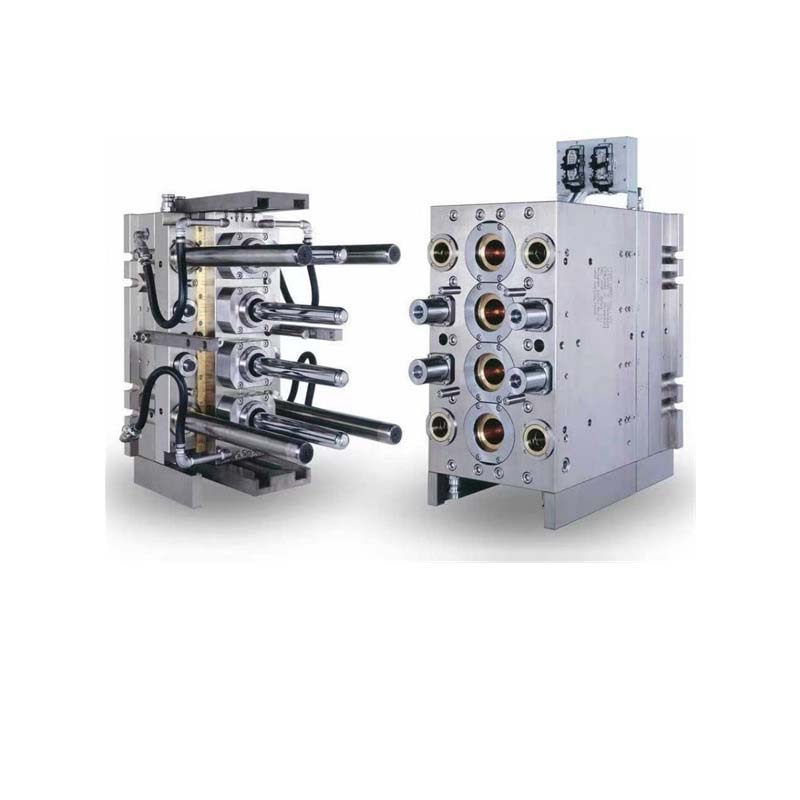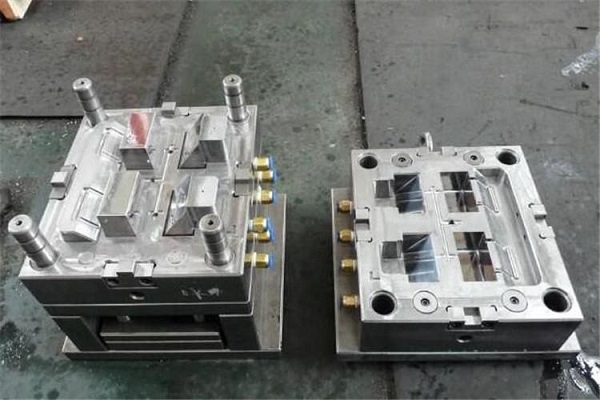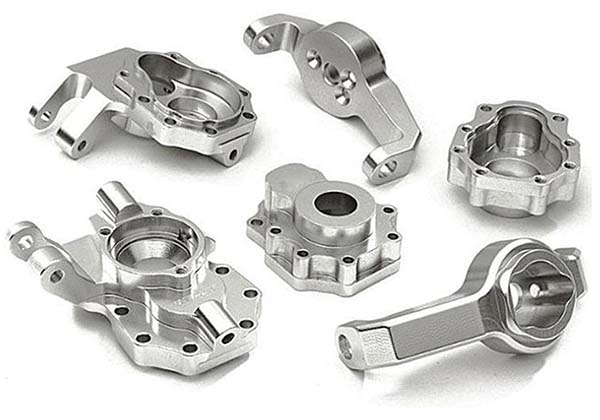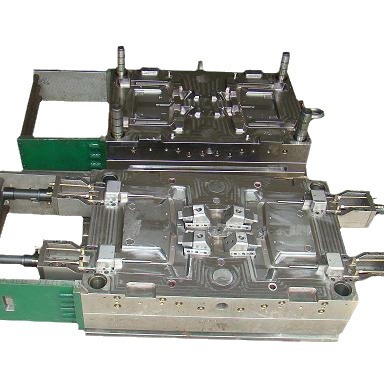Introduction
Understanding Plastic Molds
In the vast realm of industrial production, plastic molds stand as the cornerstone for manufacturing a wide array of plastic products. These molds are the tools that transform raw plastic materials into the countless items we encounter in our daily lives, from the tiny components within our electronic devices to the large exterior parts of automobiles.
The significance of plastic molds cannot be overstated. They are crucial for mass - production, ensuring high - precision and consistent quality in plastic products. In the global manufacturing industry, plastic molds are used in a diverse range of sectors, including the automotive industry, where they produce interior components, exterior trims, and functional parts; the electronics industry, for manufacturing casings of smartphones, tablets, and laptops; and the consumer goods industry, creating everything from kitchenware to toys. According to market research, the global plastic mold market has been growing steadily, with an estimated value expected to reach a substantial amount in the coming years, which further attests to their importance.
As the demand for plastic products continues to rise, so does the need to understand the different types of plastic molds. The classification of plastic molds is a complex yet essential topic, as it helps manufacturers choose the right mold for their specific production requirements. Different types of plastic molds have unique characteristics, applications, and cost - effectiveness, which we will explore in detail in the following sections.
Classification by Molding Process
Plastic molds can be classified based on the molding processes they are designed for, each with its own unique characteristics and applications.
Injection Molding Molds
Injection molding molds are among the most widely used types of plastic molds. The working principle is quite straightforward yet highly effective. First, plastic pellets are fed into a heated barrel where they are melted into a viscous liquid state. Then, under high pressure, this molten plastic is forcefully injected into a closed mold cavity through a runner system and a gate. Once the cavity is filled, the plastic is cooled and solidified, taking on the exact shape of the mold cavity. Finally, the mold opens, and the newly formed plastic part is ejected.
These molds have a complex and precise structure. They typically consist of two main parts: the fixed mold (also known as the cavity half) and the movable mold (the core half). The cavity defines the outer shape of the product, while the core forms the internal features. To ensure accurate alignment during the molding process, components like guide pillars and guide bushes are employed. Additionally, a well - designed runner system, which includes the main runner, sub - runners, and gates, is crucial for evenly distributing the molten plastic into the cavity.
Injection molding molds find extensive use in various industries. For example, in the automotive industry, they are used to manufacture a wide range of components such as dashboards, interior trims, and bumpers. In the electronics industry, they play a vital role in producing the outer casings of smartphones, tablets, and laptops. The high - precision and high - speed production capabilities of injection molding molds make them ideal for mass - producing these complex and intricate parts with tight tolerances.
Blow Molding Molds
Blow molding molds operate on a different Forming method compared to injection molding molds. In blow molding, there are two main methods: extrusion blow molding and injection blow molding. In extrusion blow molding, a hollow tube of molten plastic, called a parison, is first extruded. This parison is then placed into a split mold cavity. Once the mold is closed, compressed air is blown into the parison, forcing it to expand and conform to the shape of the mold cavity. In injection blow molding, an injection - molded pre - form is used instead of an extruded parison. The pre - form is then transferred to a blow - molding mold and inflated with air to form the final product.
One of the significant Application advantages of blow molding molds is their suitability for manufacturing hollow plastic products. They are widely used in the production of plastic bottles for beverages, detergents, and personal care products. The ability to create seamless, hollow structures with uniform wall thickness is a major advantage. In the toy industry, blow - molded toys are popular due to their lightweight and cost - effective production. Additionally, the process allows for the production of large - volume products with relative ease, making it an efficient choice for high - volume production runs.
Compression Molding Molds
Operation processof compression molding molds begins with placing a pre - measured amount of plastic material, which can be in the form of a solid pellet, powder, or pre - formed shape, into a heated mold cavity. The mold then closes, applying high pressure to the plastic material. As the pressure is applied, the plastic is forced to fill the entire cavity, taking on its shape. Heat is simultaneously applied to the mold, which helps to cure or melt the plastic, depending on whether it is a thermosetting or thermoplastic material. Once the plastic has fully cured or solidified, the mold opens, and the finished product is removed.
Compression molding molds are well - suited for manufacturing products that require high strength and dimensional stability. For instance, in the production of electrical appliance housings, the high - pressure and heat - curing process of compression molding can ensure that the final product has excellent heat resistance and mechanical strength. They are also commonly used for making plastic tableware, as the process can create smooth surfaces and precise shapes. Additionally, compression molding is often chosen for products with complex geometries that are difficult to produce using other molding methods.
Rotational Molding Molds
The Unique Rotational Molding Principle of rotational molding molds is the key that distinguishes them from other molds. During the rotational molding process, a certain amount of plastic raw materials (which can be in powder, liquid or paste form) are added to a rotatable mold. Molds usually rotate around two mutually perpendicular axes, and during the rotation, the molds are heated. As the mold rotates and heats up, the plastic raw materials are gradually and evenly distributed and adhere to the inner wall of the mold under the action of centrifugal force and gravity. As the heating continues, the plastic raw materials keep melting and further evenly cover the inner wall of the mold, eventually forming a plastic product with a shape consistent with the inner cavity of the mold. When the molding process is completed, the mold begins to cool and the plastic product solidifies accordingly. Finally, open the mold and take out the formed product.
This process is particularly suitable for manufacturing large - scale, hollow plastic products. In the production of large - capacity storage tanks, rotational molding can create seamless, one - piece structures with uniform wall thickness, Youdaoplaceholder0 high-strength and leak-proof performance. Outdoor amusement facility manufacturing is also an important application area of rotational molding. Products like playground slides, large - sized inflatable toys, and outdoor furniture can be produced with rotational molding. The process allows for the creation of complex shapes and large - scale products at a relatively low cost, as the molds are generally less expensive compared to those used in injection or blow molding for similar - sized products.
Classification by Application
Automotive Industry Molds
In the automotive industry, plastic molds play a crucial role in manufacturing a wide variety of components. Interior parts such as dashboards are typically produced using injection molding molds. These molds are designed to create complex shapes with multiple features, like instrument clusters, air vents, and storage compartments. The high - precision nature of injection molding molds ensures that the dashboards fit perfectly within the vehicle's interior, providing a seamless and aesthetically pleasing look. Door panels also rely on injection molding molds. They need to be lightweight yet durable, and the molds are engineered to incorporate features like armrests, door pockets, and speaker cut - outs.
For exterior parts, bumpers are often made using large - scale injection molding molds. Bumpers must withstand impacts and environmental factors, so the molds are designed to produce parts with high - strength materials and specific geometries for optimal energy absorption. Fenders are another exterior component. Injection molding molds for fenders are crafted to achieve smooth surfaces and precise curvatures, which are essential for aerodynamics and the overall appearance of the vehicle.
Engine parts like intake manifolds can be manufactured using a combination of injection molding and blow molding techniques. Injection molding is used for the more complex, detailed parts of the manifold, while blow molding may be applied to create the hollow sections. This combination of mold types allows for the production of engine parts that are both lightweight and efficient in their function, contributing to better fuel economy and engine performance.
Electronics Industry Molds
In the electronics industry, plastic molds are vital for creating the outer casings and various components of electronic devices. For smartphone cases, the molds must be extremely precise. Injection molding molds are commonly used, and they are designed to meet the high - volume production demands of the smartphone market. These molds need to account for features such as camera cut - outs, button placements, and speaker holes with tight tolerances. The surface finish of the mold also affects the final appearance of the smartphone case, whether it's a glossy, matte, or textured finish.
Computer accessories like laptop keyboards are produced using injection molding molds. The molds are designed to create the individual keycaps with precise shapes and sizes. The keycaps need to have a consistent feel when pressed, so the molds ensure uniform thickness and smooth surfaces. For laptop housings, injection molding molds are used to produce large, complex parts. These molds are engineered to provide structural integrity while also being lightweight, as portability is a key factor for laptops. They also need to accommodate internal components such as motherboards, batteries, and hard drives, with precise cut - outs and mounting points.
Packaging Industry Molds
In the packaging industry, plastic molds are used to create a wide range of products. Plastic bottles for beverages are typically made using blow molding molds. Extrusion blow molding is commonly used for large - volume production of water bottles, soda bottles, etc. The molds are designed to create a seamless, hollow structure with a consistent wall thickness, ensuring the bottle can hold liquid without leakage. For smaller, more specialized bottles like those for perfumes or essential oils, injection blow molding may be used to achieve higher precision and better - quality finishes.
Packaging box (Plastic boxes) for food or consumer goods often use injection molding molds. These molds are designed to create boxes with specific dimensions, lids that fit securely, and sometimes even compartments or dividers inside. For example, a mold for a food - storage box may have features to create snap - on lids and anti - leak seals.
Plastic caps for bottles are usually produced using injection molding molds. The molds are designed to create caps with threads that match the bottle necks precisely. They also need to have features like tamper - evident bands or child - resistant mechanisms, depending on the product being packaged. These caps are produced in high volumes, and the molds are optimized for fast production cycles to meet the demands of the packaging industry.
Classification by Structure
Two - Plate Molds
Two - plate molds are one of the most basic and commonly used types of plastic molds. Structural composition(Structural Composition) is relatively simple. They consist mainly of two main parts: the fixed mold half (also known as the A - plate) and the movable mold half (the B - plate). The fixed mold half contains the cavity where the outer shape of the plastic product is formed, while the movable mold half holds the core, which determines the internal features of the product. A sprue bushing is located in the fixed mold to guide the molten plastic into the mold, and a runner system, usually a simple straight - through runner, connects the sprue to the cavity.
When the mold is in operation, during the The process of opening and closing molds(Mold Opening and Closing Process), the two plates first close tightly. Molten plastic is injected into the mold cavity through the sprue and runner system. After the plastic has cooled and solidified, the mold opens. The movable mold moves away from the fixed mold, and the newly formed plastic part is ejected, often with the help of ejector pins located in the movable mold.
Two - plate molds have significant (Advantages) in the production of simple plastic products. Their simple structure makes them relatively inexpensive to manufacture compared to more complex mold types. They also have a shorter production cycle because there are fewer components to deal with during the molding process. For example, in the production of basic plastic containers like yogurt cups, two - plate molds can efficiently produce large quantities of products with consistent quality. The simplicity of the mold design also means that maintenance and repair are relatively straightforward, reducing downtime and production costs in the long run.
Three - Plate Molds
Three - plate molds, as the name implies, have a more complex (Structure) compared to two - plate molds. In addition to the fixed mold half (A - plate) and the movable mold half (B - plate), they have an additional middle plate, known as the runner plate. This runner plate is a key feature that gives three - plate molds their unique advantages.
The runner system in a three - plate mold is more elaborate. It allows for a more flexible (gate design), especially suitable for point - gate applications. Point gates are small, precise openings through which the molten plastic enters the mold cavity. In a three - plate mold, the runner plate enables the separation of the runner system from the product, which is crucial for products that require a clean separation of the runner from the final part. This is because, during the mold - opening process, the runner plate moves independently, separating the runner from the product first, and then the main mold plates open to eject the product.
Three - plate molds find extensive use in the production of (plastic products with point gates). For instance, in the manufacturing of small, high - precision plastic components such as electronic connectors or small gears, the use of point gates provided by three - plate molds is essential. Point gates can ensure that the molten plastic fills the mold cavity evenly and precisely, resulting in products with high dimensional accuracy and smooth surfaces. The ability to separate the runner cleanly also reduces the need for secondary processing to remove the runner from the product, saving both time and cost in the production process.
Hot Runner Molds
(Hot runner molds)represent an advanced type of plastic mold technology, characterized by a unique (features of no waste, high efficiency, and energy - saving). Unlike traditional cold - runner molds that generate waste plastic in the form of runners and sprues, hot runner molds keep the plastic in the runner system in a molten state throughout the molding process. This is achieved by using heating elements, such as cartridge heaters, to maintain the temperature of the runner channels.
The hot runner system consists of a hot manifold, which distributes the molten plastic to multiple hot nozzles. Each hot nozzle is directly connected to the mold cavity, allowing the molten plastic to be injected into the cavity without the need for a cold runner. This not only eliminates the waste of plastic material in the runner system but also reduces the energy consumption required to heat and cool the runner plastic in each molding cycle.
In the production of (precision plastic products), hot runner molds are highly favored. For example, in the manufacturing of optical lenses for cameras or medical devices, where high precision and consistent quality are crucial, hot runner molds can ensure that the plastic is injected into the mold cavity with precise control. The elimination of runner waste also means that the material properties of the final product are more uniform, as there is no need to re - grind and reuse runner plastic, which could potentially affect the material's performance. Additionally, the faster cycle times achievable with hot runner molds due to the elimination of runner cooling time make them ideal for high - volume production of precision parts, contributing to increased productivity and reduced production costs in the long term.
Yigu Technology's Viewpoint
As a non - standard plastic metal products custom supplier, Yigu Technology deeply understands the importance of a comprehensive understanding of plastic mold classifications. Different types of plastic molds require distinct design concepts, manufacturing processes, and material selections.
When it comes to injection molding molds, we focus on optimizing the runner system design to ensure efficient plastic flow and minimize waste. For blow molding molds, our expertise lies in creating molds that can produce products with consistent wall thickness, especially for large - scale hollow products. In the case of compression molding molds, we pay attention to the material's heat - curing characteristics to ensure the final product has excellent strength and stability.
For custom - made products, we first conduct in - depth communication with customers to fully understand their product requirements, production volume expectations, and budget constraints. Based on this understanding, we recommend the most suitable type of plastic mold. For example, if a customer needs to produce small - batch, high - precision plastic components, we might suggest a three - plate mold with a point - gate design. If it's large - scale, hollow products like storage tanks, rotational molding molds would be a better choice. Our goal is to provide customers with cost - effective and high - quality custom - made solutions, enabling them to gain a competitive edge in the market.
